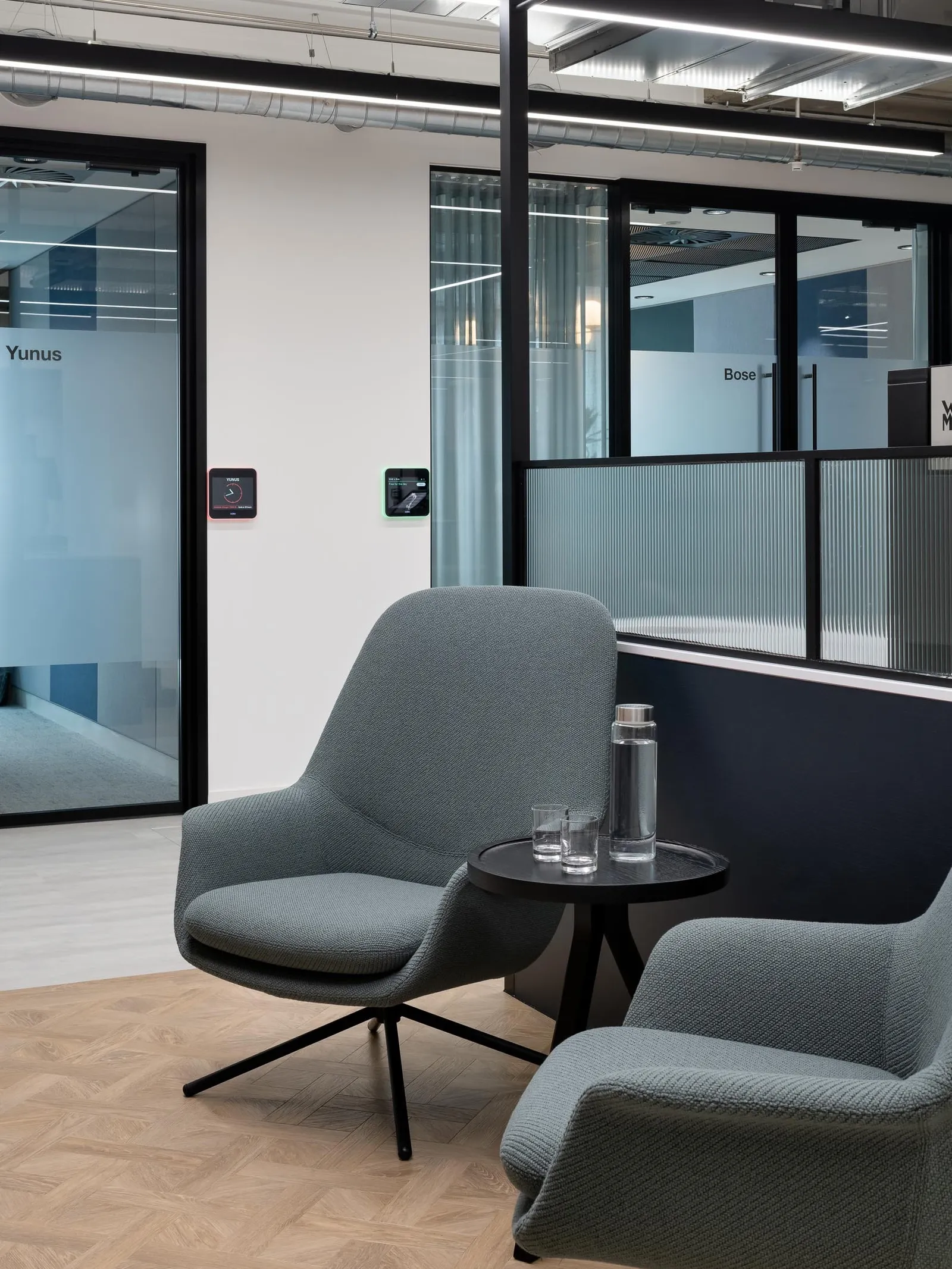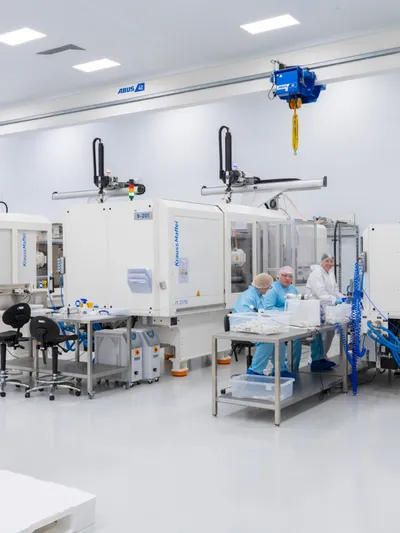Life science laboratories sit at the heart of modern research and development. These spaces are designed to support innovation in fields such as biotechnology, pharmaceuticals, diagnostics, and genomics.
From investigating human health to advancing sustainable agriculture, they provide the controlled environments where discoveries become tangible outcomes.
At Area, we create laboratories that meet the exacting standards required for such work, combining technical precision with future-focused design.

What is a life science lab?
A life science lab is a purpose-built space where scientists study living organisms and biological processes. These environments typically accommodate either wet labs, which involve handling chemicals and biological samples, or dry labs, where data, modelling, and computational biology take precedence. Each requires a distinct design approach, as they support very different modes of research.
Aspect | Wet Labs | Dry Labs |
Focus | Experiments involving biological samples, chemicals, and liquids | Data analysis, modelling, simulations, and computational biology |
Core needs | Ventilation systems, biosafety cabinets, fume hoods, autoclaves, chemical-resistant surfaces | High-capacity data infrastructure, secure networks, robust power supply, server cooling |
Environmental control | Precise regulation of air quality, humidity, and temperature for safe handling | Focus on stable power and climate control for sensitive IT equipment |
Safety requirements | Stringent biosafety measures, spill containment, chemical storage | Cybersecurity protocols, controlled access for sensitive data |
Flexibility | Modular benching and adaptable zones for evolving experiments | Configurable workstations, collaborative zones for interdisciplinary teams |
Together, wet and dry labs form the complementary environments that drive innovation across the life sciences.

Types of life science laboratories
Life science research covers a broad spectrum of activity, and so do the spaces in which it happens. Each laboratory type has its own purpose, design considerations, and technical demands:
Biotechnology laboratories – hubs for genetic engineering, cell culture, and advanced bioengineering. These spaces need carefully controlled environments for sensitive work such as protein engineering or fermentation processes, often with specialist utilities like gas distribution, purified water systems, and cleanroom zoning.
Genomics laboratories – highly specialised facilities designed for sequencing and analysing DNA. They must integrate powerful sequencing technology with rigorous contamination control, as the integrity of samples is vital. Acoustic management, vibration isolation, and robust IT infrastructure are also critical.
Diagnostic laboratories – clinical settings focused on disease testing and patient health data. Their design prioritises accuracy, turnaround speed, and biosafety, often requiring automated equipment zones and clear separation of pre- and post-analytical workflows to safeguard results.
GMP/CMO facilities – labs built to comply with Good Manufacturing Practice for production and contract research. They demand validated cleanrooms, rigorous quality management systems, and layouts that support both efficiency and compliance.
Together, these laboratory types form the foundation of the life sciences, enabling innovation across health, agriculture, and industrial biotechnology.
Key features of a life science lab
Designing laboratories for science means creating environments that enable accuracy, safety, and collaboration. While every project is unique, there are common features that ensure labs meet the needs of researchers and organisations alike:
Specialised equipment zones – autoclaves, biosafety cabinets, fume hoods, and cold storage need dedicated, well-ventilated areas. Positioning these correctly within the workflow can make the difference between a smooth process and an inefficient layout.
Environmental control – strict regulation of temperature, humidity, and air pressure protects both experiments and personnel. Life science labs often incorporate multiple control zones within a single facility to accommodate varied experimental conditions.
Flexibility – modular benching, adaptable storage, and open layouts allow spaces to evolve as scientific priorities change. This is especially valuable for organisations scaling rapidly or pivoting to new areas of research.
Safety – from controlled access and integrated fire suppression to design measures that support biosafety levels (BSLs), safety is integral to every stage of laboratory planning. Creating safe spaces is incredibly important when thinking about lab design.

Sustainability and the future
Life science laboratories are energy-intensive by nature, but sustainable design is now an expectation rather than an option. Forward-looking labs increasingly feature:
High-efficiency HVAC systems – to reduce the significant energy demands of climate control.
Smart building systems – monitoring usage in real time to optimise energy and water consumption.
Material choices – sustainable finishes, recyclable furnishings, and efficient storage solutions.
Renewable integration – from solar panels to heat recovery systems, ensuring long-term performance with a lower carbon footprint.
Green labs explore how environmental responsibility can be embedded without compromising scientific outcomes.
Conclusion
Life science labs are more than technical facilities; they are catalysts for progress in medicine, biotechnology, and environmental science. At Area, we design and deliver laboratories that empower scientists to work effectively today while remaining adaptable for tomorrow.
If you’re interested in our laboratory services, start your journey by getting in touch with us today.
Life Science Laboratory FAQs
What safety standards or classifications do life science labs need to meet?
Labs are commonly subject to biosafety levels (BSLs) which define containment measures; also standards such as ISO/IEC 17025 (for testing/calibration labs) may apply.
How can life science labs be made more sustainable?
By using energy-efficient HVAC systems, integrating renewables, selecting sustainable materials, installing smart monitoring of energy and water usage.
What regulatory or accreditation requirements are relevant for diagnostic or GMP labs?
Clinical labs or GMP/CMO facilities have strict regulatory compliance requirements (e.g. validation, documentation, quality systems), depending on jurisdiction.




